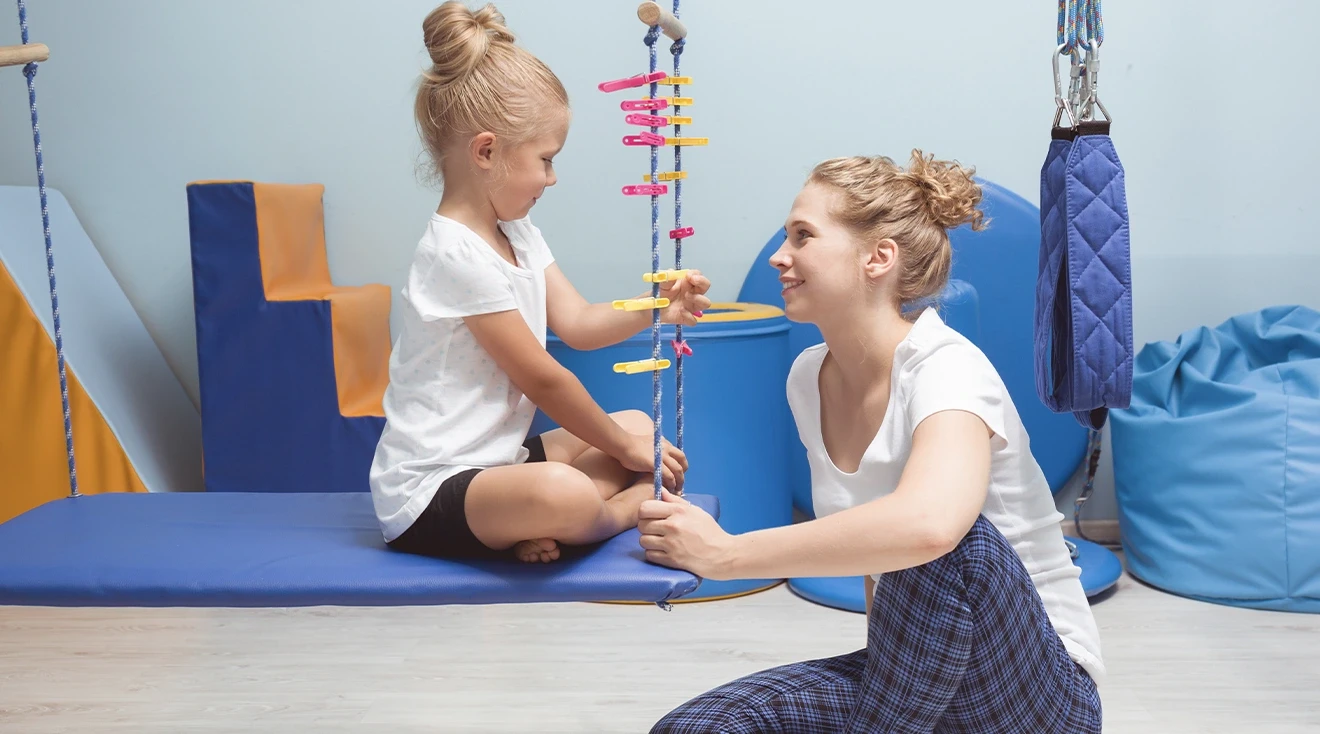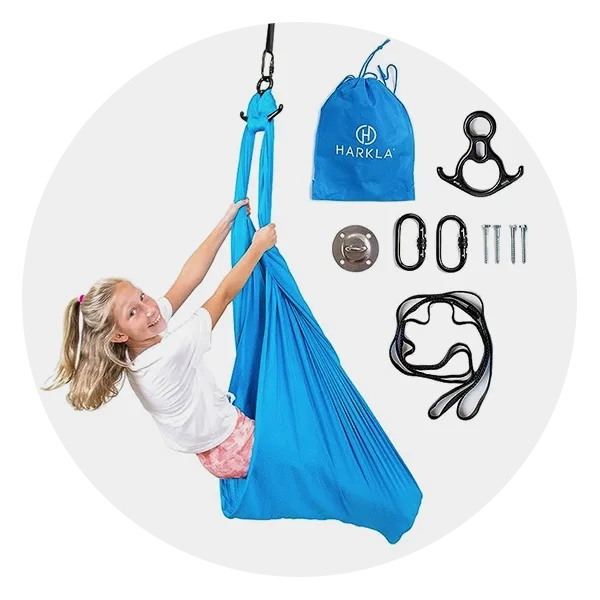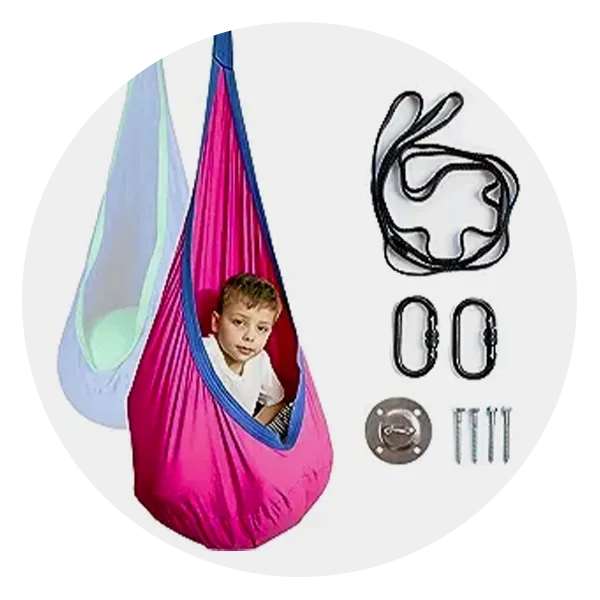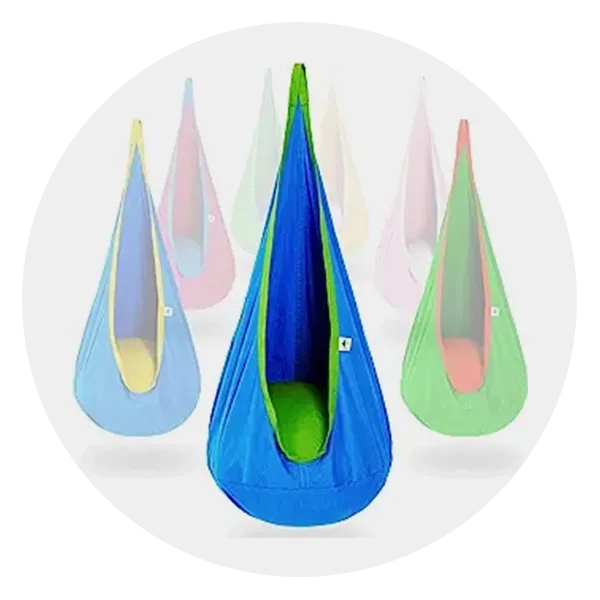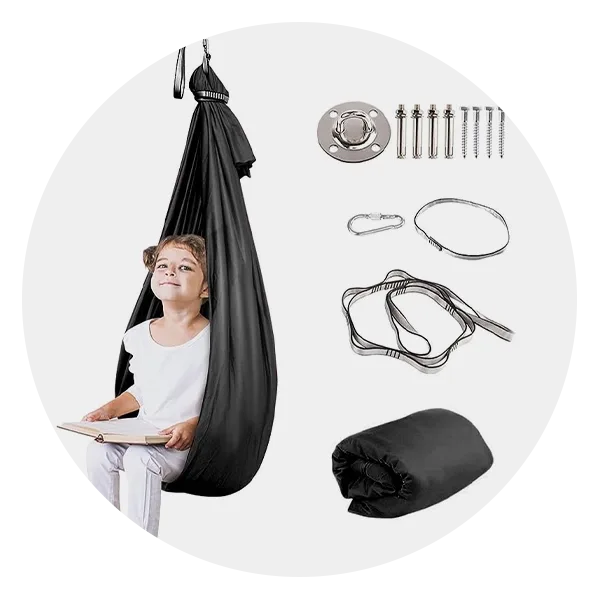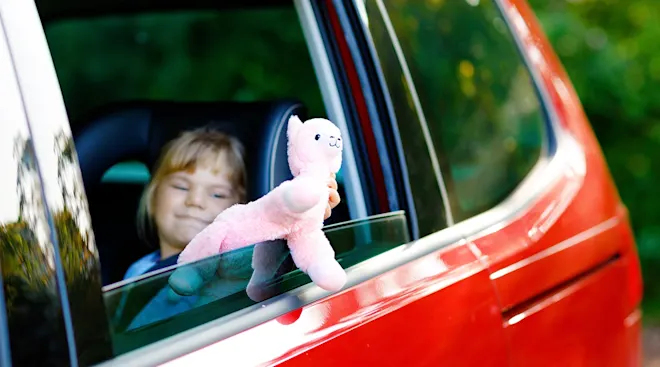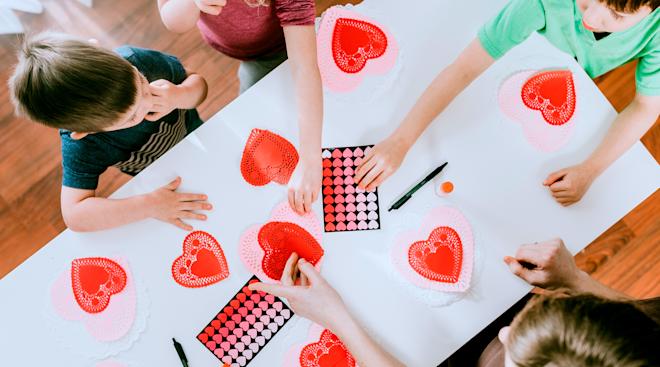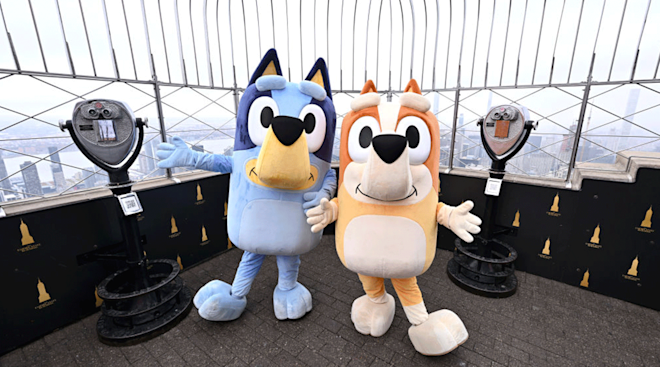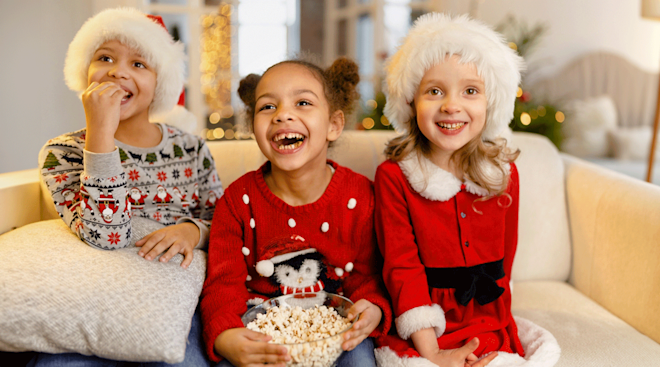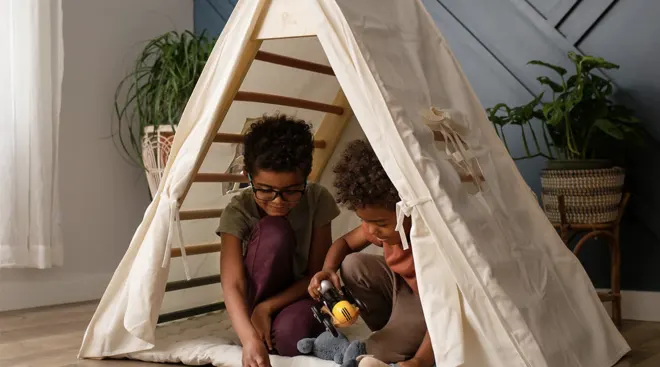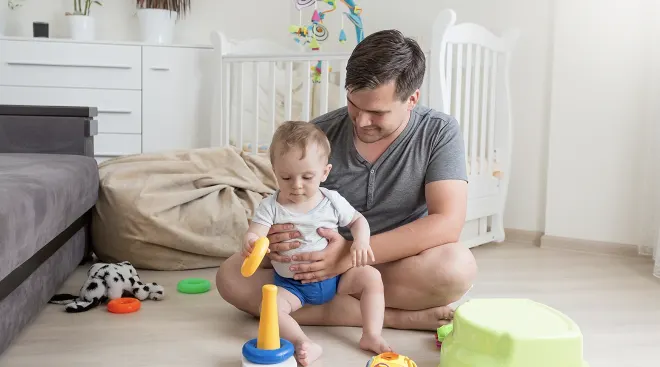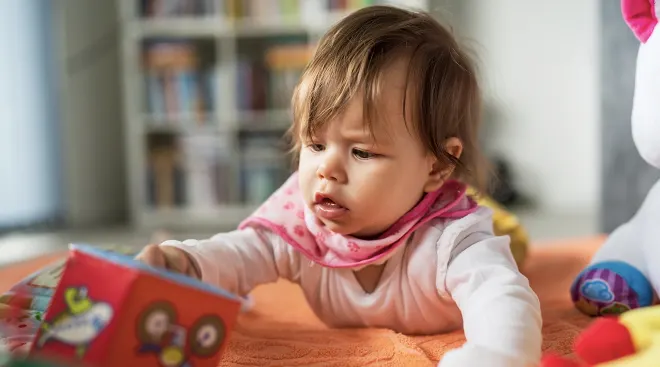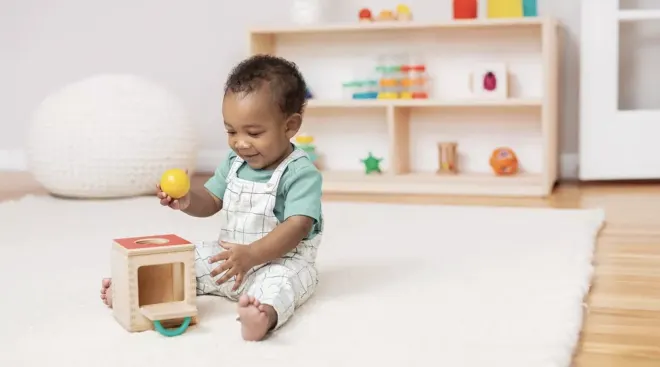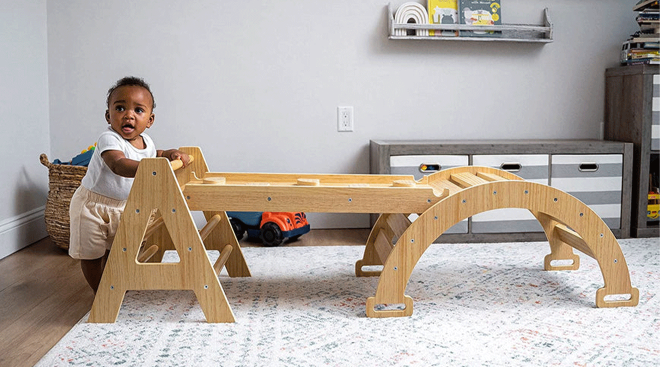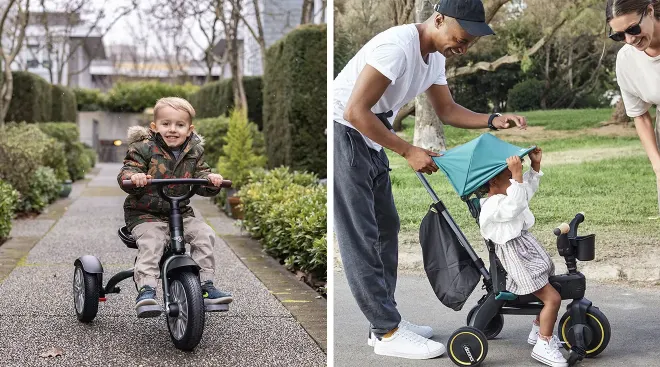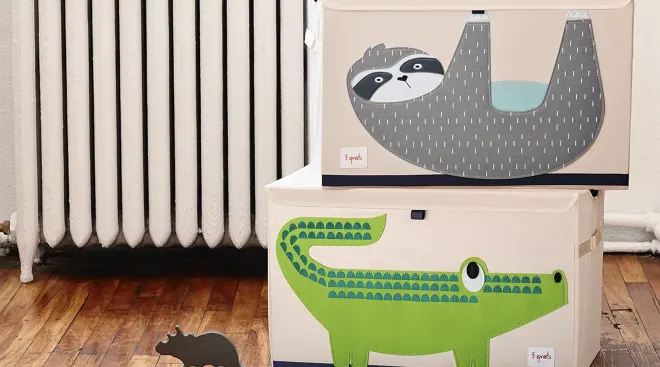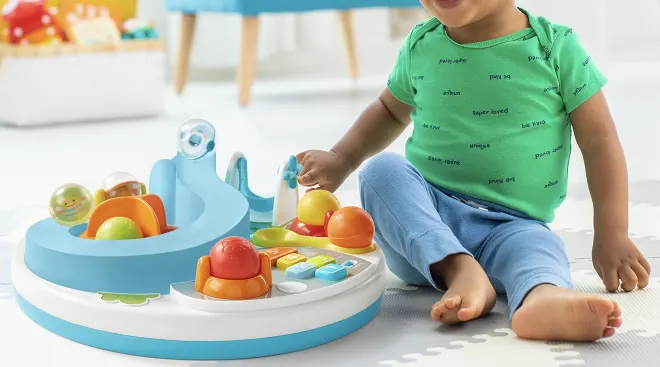The Best Sensory Swings to Help Them Manage Their Feelings
One tried and true method for calming a fussy baby? Swaying back and forth (hence the popularity of baby swings). But babies aren’t the only ones who can benefit from the soothing effects of a swinging motion—it’s also a useful tool for children and adults (especially those with sensory difficulties and other neurodivergent disorders). That’s where sensory swings come in.
But what is a sensory swing, and how does it differ from the typical swing set you’d find in a backyard or playground? Here, we break down all the basics of sensory swings—from the different types, to the uses and benefits, to the safety considerations to keep top of mind. And best of all, we’ve determined some of the best sensory swings for kids available on the market. Keep reading for a lesson in all things sensory swings.
A sensory swing is a tool typically used in occupational therapy settings “to promote nervous system regulation, facilitate postural control and improve attention,” says Annmarie DeMarco, OTR/L, a pediatric occupational therapist practicing in Fairfield County, Connecticut. Depending on the type of swing and the type of motion—either linear or circular—a sensory swing can help to either calm and relax an individual or help them be more alert and focused.
“Slow, predictable, linear movement—back and forth—is calming,” DeMarco explains. “Rotary or orbital input—spinning or going in large circles—is more alerting.”
And while sensory swings are often used as a tool to aid neurodivergent children, “anyone can benefit from using a swing, even adults,” stresses Leah Kragh, MS OTR/L, a Connecticut-based pediatric occupational therapist. DeMarco echoes the same point: “We all have sensory systems and we can all benefit from sensory input,” she says. Some of those benefits include improvements in emotional regulation, attention span, gross and fine motor skills, visual processing skills and strength and endurance—just to name a few.
With all of the benefits to sensory swings, it makes sense that parents and caregivers would want to introduce them into their homes. But since different swings and motions can have different effects, it’s important to not only understand the types of sensory swings available, but also your child’s specific sensory needs. “Understanding a child’s sensory needs and preferences are imperative prior to utilizing a sensory swing,” says DeMarco.
As for the different types of sensory swings, here’s a look at some of the most commonly used:
- Cocoon, pod or hammock sensory swings. These types of sensory swings are often made of a stretchy material that provides a cocoon or hammock-like enclosure for your child. Depending on how they are hung, they can either swing back and forth or rotate in circles. This type of swing “acts like a hug and provides ‘deep pressure’ input to the person’s body,” explains Kragh. “This can be an added benefit because the ‘deep pressure hug’ can help a child with improving their body awareness.”
- Platform sensory swings. Another frequently used sensory swing is a platform swing, which has a hard, flat bottom. This type of swing is often used for rotary movement, can tilt and promotes “core strengthening, body awareness and postural control,” says DeMarco.
- Bolster sensory swings. A bolster swing has a large cylindrical mat or tube for your child to swing from. It’s typically used in therapy settings to help improve strength, gross motor skills, coordination and address sensory processing. They can be quite expensive, though, and are less frequently used in the home.
Before making a decision on which type of sensory swing is best for your family’s needs, both DeMarco and Kragh suggest consulting with an occupational therapist first—particularly if the swing is going to be used for therapeutic purposes. “It’s wonderful that sensory swings are more readily available to the public, but reaching out to an occupational therapist for a consult is really the best way to determine the qualities you should look for prior to purchasing a swing,” says DeMarco.
Additional safety considerations to keep in mind include ensuring the swing is properly and safely installed and that a child never uses a sensory swing unattended. “Installation and supervision are both crucial,” says DeMarco. “All sensory swings come with hardware that should be installed by a professional and there should be enough space for the child to swing without bumping into a wall or furniture. Also, always supervise a child when they are utilizing a sensory swing and remove the swing when it’s not in use.”
With this information in mind, here’s a closer look at some of the best, most popular sensory swings for kids.
Overall best sensory swing
- Includes a free digital course explaining how to use the sensory swing, best practices and other therapeutic activities
- Will grow with your child thanks to the high weight limit
- Features a lifetime guarantee
- Only swings back and forth; for swiveling, it requires an additional attachment
Harkla is a company that specializes in creating products for special needs children, and their compression sensory swing is a prime example of their thoughtful and effective designs. Harkla’s compression swing provides a hug-like effect for your child, helping to promote feelings of calm and self-regulation. This sensory swing also comes equipped with all of the necessary hanging hardware, making for an easy set-up, and its soft fabric only stretches width-wise to prevent any sagging. Not only is this one of the best sensory swings for kids on the market, it’s also a purchase you can feel good about: Harkla donates 1 percent of all sales to the University of Washington Autism Center.
Type: Compression swing | Material: Nylon tricot | Holds up to: 200 lbs.
Best indoor sensory swing
- Machine-washable
- Equipped with all of the necessary hanging hardware for easy assembly
- Includes a lifetime guarantee
- Requires a special attachment to swivel
When it comes to indoor sensory swings, the Harkla Pod Sensory Swing is at the top of its class. It features an enclosed swing with an inflatable cushion that provides both deep touch pressure and vestibular input, helping to create a sense of calm in your child (or young adult, as it can hold up to 150 pounds). This indoor sensory swing is used by occupational therapists to help children with both autism spectrum disorder and sensory processing disorder, but it’s also a great option for any child looking for a quiet, calming place to relax.
Type: Pod swing | Material: Canvas | Holds up to: 150 lbs.
Best sensory hammock swing
- Reinforced edges make the fabric tear resistant
- Features 104 suspension cords to give the feeling of weightlessness
- Machine washable
- Doesn’t include hanging hardware
Sensory sensitivities or not, the Habana hammock chair from La Siesta is the perfect place to relax. It’s large enough to either sit or lay down in (a great option for those with low muscle tone), and its surrounding sides help provide the comforting feel of a hug while swinging. The swivel mechanism allows you to swing either forward and backwards or side to side, but the real standout feature on this swing is the fabric—which is an unbleached, undyed organic cotton that’s both super soft and sustainably made.
Type: Hammock swing | Material: 100% cotton | Holds up to: 355 lbs.
Best sensory pod swing
- Extremely lightweight, making it easy to move
- All hanging hardware, including screws for both concrete and wood surfaces, is included
- Weight limit is on the lower side
The Outree Kids Pod Swing Seat checks all of the boxes when it comes to sensory pod swings: Not only does it provide a safe, comforting space for your child to swing when they become overstimulated, but it also can be used indoors or outdoors, is incredibly lightweight (just 2.2 lbs.) and is affordable (without sacrificing quality). But what really makes this sensory pod swing a standout in our books is its simple and easy installation—and more than 6,000 reviewers agree.
Type: Pod swing | Material: 100% cotton | Holds up to: 100 lbs.
Best budget-friendly sensory swing
- All of the hanging hardware is included
- Breathable nylon fabric doesn’t sag
- Children under the age of three should use this swing under supervision
Sensory swings can be a hefty investment, but the Aokitec Sensory Swing for Kids is a great budget-friendly option, ringing in at just under $40 without skimping on features. This sensory swing is machine-washable, can be used indoors or outdoors and can support up to 220 pounds. Plus, children (or adults) can bounce, swing, spin or lie down in this swing, making the options for comfort and therapy endless.
Type: Cocoon swing | Material: Nylon | Holds up to: 220 lbs.
Whether you’re seeking a sensory swing for your child with special needs or looking to add one as a place to relax in your playroom, you’ll want to find the best and safest option for you and your family. That’s where we come in: To streamline your decision-making process, our goal is to do the bulk of the research for you, so you don’t have to spend hours scrolling through online retailers. We do this by considering a list of criteria when sourcing products, including ease of use, quality and durability, value and, last but definitely not least, safety. That way you can count on getting a sensory swing that’s not only effective, but that will also stand the test of time for you and your family.
To decide which sensory swings are the best options on the market, we leveraged our familiarity with leading brands to make sure items are from reliable manufacturers. We consulted research papers by leading occupational therapists to understand which sensory swings work best in a home setting. We also read user reviews to get the low-down on how these sensory swings work for families, and we didn’t consider anything with less than an average four-star rating. And to make sure we’re highlighting products that are both safe and effective, we chatted with pediatric occupational therapists to understand essential features and safety considerations to keep top of mind when you’re shopping.
Interested in learning more about our editorial process? Read about how our team develops and reviews all articles here.
Please note: The Bump and the materials and information it contains are not intended to, and do not constitute, medical or other health advice or diagnosis and should not be used as such. You should always consult with a qualified physician or health professional about your specific circumstances.
Plus, more from The Bump:
Annmarie DeMarco, OTR/L, is a pediatric occupational therapist in Fairfield County, Connecticut. She currently provides in-home services through her private practice, specializing in sensory processing and reflex integration.
Leah Kragh, MS OTR/L, is a pediatric occupational therapist and the owner of Flourish Family Support, which works with children and caregivers to support them with improving functional skills and developing appropriate levels of independence.
Navigate forward to interact with the calendar and select a date. Press the question mark key to get the keyboard shortcuts for changing dates.
































